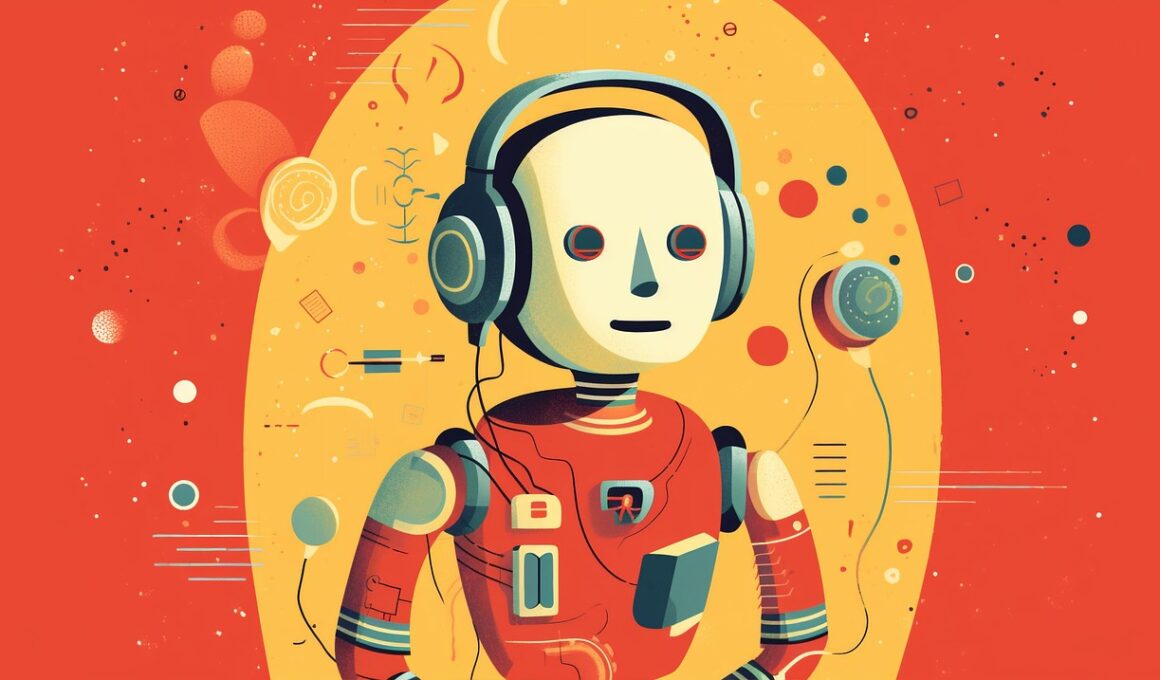How Chatbots are Changing B2C Customer Engagement
In recent years, the evolution of technology has had a significant impact on how businesses engage with their customers. One of the most profound advancements in this area is the introduction of chatbots. These digital assistants have revolutionized the landscape of B2C marketing by enhancing customer interactions. Chatbots can be available 24/7, making them an appealing option for customers seeking assistance outside of traditional business hours. Their ability to respond quickly and accurately to inquiries drives customer satisfaction. As soon as a customer texts a question, the bot analyses it and provides relevant answers or solutions with little to no waiting time. This immediacy allows businesses to create a more engaging experience, leading to higher retention rates. Moreover, chatbots gather invaluable data regarding customer interactions, helping businesses understand their audience better and refine their strategies. This data can include frequently asked questions, product preferences, and consumer behavior trends. Such insights allow companies to tailor their offerings more precisely. In this way, chatbots are not just tools for communication; they are evolving into essential components of a successful marketing strategy.
Benefits of Using Chatbots in B2C Marketing
Integrating chatbots into a B2C marketing strategy comes with several benefits that companies cannot afford to overlook. First and foremost, chatbots enhance the overall customer experience. They eliminate long waiting times, delivering instant responses to customer inquiries. This capability aligns perfectly with the modern consumer’s expectation for swift service. Additionally, chatbots can operate alongside existing customer service teams, providing assistance with routine queries while human agents focus on complex issues. This efficiency improves overall productivity. Furthermore, chatbots can also handle interactions with multiple customers simultaneously, effectively reducing resource expenditure while ensuring customer engagement remains consistent. Another significant benefit is cost-efficiency. Businesses that implement chatbots can lower their operational costs significantly, as they reduce the need for large customer service teams. These savings can be redirected to other important areas such as marketing campaigns or product development. Lastly, chatbots can generate leads by capturing contact information and qualifying potential customers through initial conversations. They can guide prospects down the sales funnel, assisting in converting inquiries into actual sales.
Beyond operational benefits, chatbots also contribute to enhanced marketing strategies by personalizing customer interactions. Chatbots analyze user data to tailor responses and recommend products based on past shopping behavior. This level of personalization makes customers feel valued, fostering brand loyalty. For instance, when a customer interacts with a chatbot, the system can suggest products that align with their preferences, previous purchases, or even seasonal trends. Such interactions not only provide a seamless shopping experience but also increase the likelihood of upselling and cross-selling. In a crowded marketplace, personalized engagement stands as a unique selling proposition that can set a brand apart from its competitors. Furthermore, with advancements in artificial intelligence, modern chatbots are capable of natural language processing. This allows them to understand and respond to human emotions and sentiments. As a result, they can detect frustration or confusion in a customer’s language and escalate matters appropriately. This capability enables businesses to handle sensitive situations more gracefully. Ultimately, the personalization offered by chatbots transforms calls into connections, building stronger relationships between brands and customers.
Challenges Associated with Chatbot Implementation
Despite the numerous advantages, businesses must navigate certain challenges when implementing chatbots in their B2C strategies. One of the primary challenges is ensuring the chatbot provides accurate and relevant information. Inadequate training can lead to miscommunication and dissatisfaction among users, raising concerns about the effectiveness of these technologies. Continuous learning and updating involve significant investments in resources and time. In addition, if a chatbot encounters a question it cannot answer, proper escalation to a human representative is essential. A failure in this process can harm customer satisfaction and erode trust in the brand. Furthermore, companies must also address privacy concerns as they collect and analyze user data. Particularly in an era of stringent data protection regulations, transparency in how customer information is handled is paramount. Mismanagement of data could lead to potential legal repercussions and damage to the company’s reputation. Lastly, there is a learning curve involved in understanding the capabilities of chatbot technology. Organizations must invest in skilled personnel who can manage the integration process efficiently, ensuring the chatbot aligns with business objectives.
Another challenge that businesses face revolves around customer acceptance of chatbots as communication tools. Many consumers still hold reservations regarding fully automated interactions. They may prefer to speak with a human agent instead of dealing with a chatbot, especially in more sensitive or complex scenarios. To combat this hesitancy, businesses must focus on optimizing the chatbot experience. Providing clear choices for users to switch to a human if preferred can create a sense of security. Empowering customers with options significantly enhances their overall satisfaction and trust in the system. Moreover, brands should invest in marketing their chatbot features, ensuring customers are aware of the convenience brought by these tools. Demonstrations of the ease with which chatbots can handle inquiries can dispel doubts. Additionally, companies should continuously gather feedback and insights from users to improve the chatbot experience. Regular system updates based on this feedback can help maintain user engagement and foster acceptance. Ultimately, building trust and demonstrating effectiveness can bridge the gap between consumer skepticism and chatbot utility.
The Future of Chatbots in B2C Marketing
Looking forward, the role of chatbots in B2C marketing is poised to expand significantly, reflecting broader trends in technology and customer expectations. As artificial intelligence continues to evolve, the capabilities of chatbots will become increasingly sophisticated. Enhanced AI will enable chatbots to conduct more nuanced conversations, mimicking human interactions more closely. This shift will allow businesses to rely even more on bots for handling customer relations. Moreover, as e-commerce continues to grow, chatbots will play a critical role in automating sales processes. Increased integration of chatbots with other technologies, such as augmented reality, may also create enriched shopping experiences. Picture a scenario where customers could use chatbots to guide them through virtual shopping environments. This integration could merge interactivity with automation, making shopping engaging and efficient. Additionally, the incorporation of voice recognition technology could further evolve the role of chatbots. Customers may find it more convenient to interact via voice commands, enhancing accessibility. As these trends develop, businesses that adapt and invest in chatbot technology will likely emerge as leaders in their respective industries, offering customer experiences that are not only innovative but also remarkably seamless.
In conclusion, chatbots are dramatically reshaping the landscape of B2C customer engagement. Their ability to provide timely, personalized responses enhances transaction experiences and fosters loyalty. As they evolve in sophistication, businesses must stay ahead of the technology curve. This will involve recognizing the challenges and addressing any limitations while harnessing the potential advantages. Continuous improvement, feedback-driven enhancements, and the balancing act between automation and human touch will shape the future strategies of companies. By adopting chatbots effectively, businesses can streamline operations, reduce costs, and elevate customer satisfaction. Ultimately, the synergy between automation and personalized service may redefine how customers interact with brands. Companies that master this balance will pave the way for future engagements, solidifying their position in a competitive marketplace. As the digital landscape continues to shift, the key lies in remaining adaptable and attentive to consumer trends and preferences. By committing to innovation and understanding the needs of their audience, businesses can capitalize on the opportunities presented by chatbots to drive success in B2C marketing.


